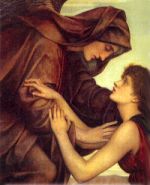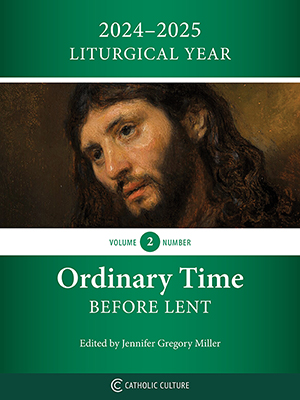Beauty (Of Christ) Will Save The World, The
The Holy Father sent a Message, dated 5 August, signed by the Secretary of State, Cardinal Angelo Sodano, to Bishop Mariano De Nicolo of Rimini, Italy, for the 23rd Meeting for Friendship among Peoples of the ecclesial movement Communion and Liberation. This year the meeting's theme was: The Feeling of Things, the Contemplation of Beauty. At the Rimini meeting, a record number of ministers of the Italian Government — seven — are scheduled to address the crowds who flock to the week-long session. Among them is the Prime Minister of Italy, Silvio Berlusconi. In his Message, the Pope spoke of how strongly related to each other truth and beauty are in the Christian vision of things. Christ exemplified the union of the two: in the beauty of Christ one can find the attractiveness of his truth even the beauty of Christ has to include the Cross and the Resurrection. "The unique correspondence of truth and beauty in the Word made man is portrayed in the depictions of Christian art which, in our time, inspire the desire to rediscover it in contemporary works". The Holy Father also spoke of beautiful art giving us some glimpse of future happiness. "In the beautiful what we find shining forth is the truth which draws to itself with the unmistakable fascination that great values exercise. Thus, sentiment and reason are radically united in an appeal that is made to the whole person. Reality, with its beauty, allows us to experience the beginning of attainment and whispers to us: 'You will not be unhappy: your heart's desire will be fulfilled, indeed, it is already being fulfilled"'. Here is a translation of the Holy Father's Message.
Dear Bishop De Nicolo,
On the occasion of the 23rd Meeting for Friendship Among the Peoples, the Holy Father invites you to offer the participants his cordial greeting and to express to them his deep appreciation of this important initiative, which in the last few years has become an important event in the Italian Catholic world.
Beauty Reveals, Attracts To Truth
You have chosen a provocative topic for your meeting: "The Feeling of Things, the Contemplation of Beauty". Christ said: "I am the truth" (cf. Jn 14,6), and those who met him on the roads also saw in him "the fairest of the sons of men" (Ps 45[44],3). The unique correspondence of truth and beauty in the Word made man is portrayed in the depictions of Christian art, which, in our time, inspire the desire to rediscover it in contemporary works. In fact, today, thought often tends to assert that truth is foreign to the world of art. Beauty is only supposed to affect the feelings and so to offer a delightful escape from the iron laws that rule the world. But is this really the case?
Tangible And Intangible Beauty Draw To A Higher World By Creating Wonder
The beauty of nature, things and people, seen as they are, can be stunning. How can we not see in a mountain sunset, in the immensity of the ocean, or in the features of a face, something that both attracts us and invites us to want to know more about the reality in which we live? This observation impelled Greek thought to give rise to the idea that philosophy is born from the wonder that is inseparable from the fascination of beauty. Even what lies outside the tangible world has its own deep beauty that impresses the spirit and gives rise to admiration. Think of the powerful spiritual attraction of an act of justice, a gesture of forgiveness, a sacrifice made with joy and generosity for a great ideal.
In the beautiful what we find shining forth is the truth which draws to itself with the unmistakable fascination that great values exercise. Thus, sentiment and reason are radically united in an appeal that is made to the whole person. Reality, with its beauty, allows us to experience the beginning of attainment and whispers to us: "You will not be unhappy; your heart's desire will be fulfilled, indeed, it is already being fulfilled".
Beauty Can Express A Fascination With Evil
Beauty can sometimes seduce and corrupt, but this degeneration, as the Gospel recalls, represents the bitter fruit of an evil choice born in the person's heart, since "there is nothing outside a man which by going into him can defile him; but the things which come out of a man are what defile him" (Mk 7,15). Here the person's sight stops at appearances; by denying the invitation present in every beautiful thing to go beyond it, he denies its value as sign and seeks to possess it, thus gradually losing every trace of beauty.
St Augustine refers to this sorrowful experience in the Confessions when he admits: "I threw myself on the beautiful things you created. Your creatures, which would not have existed except in you, kept me apart from you" (X, 27,38). The Bishop of Hippo recalls, however, that it was precisely beauty that reunited him with God:
"You called me, you shouted, and you overcame my deafness. You sent a bright light, you shone and dispelled my blindness. You spread your fragrance, I inhaled it and now I long for you" (ibid.)
The Beauty Of Creation Should Lead To The Beauty Of The Creator
The radiance of the beauty we contemplate opens the soul to the mystery of God. The Book of Wisdom reproached those who "were unable from the good things that are seen to know him who exists" (13,1), from the admiration of their beauty they should have been able to ascend to their Author (cf. 1,3; 3). Indeed, "from the greatness and beauty of created things comes a corresponding perception of their Creator" (13,5). Beauty has a pedagogical power that can introduce us effectively to the knowledge of the truth. Finally, it leads to Christ who is the Truth. Indeed, when love and the quest for beauty flow from a vision of faith, we can have a deeper perception of things and enter into contact with the One who is the source of every beautiful thing.
Christian Art Can Express Something Of The Beauty Of Christ
Christian art at its best splendidly confirms this insight, and such art appears as a tribute to transfigured beauty that is rendered eternal by the vision of faith.
The Supreme Pontiff fervently hopes that the Meeting for Friendship among Peoples will contribute to spreading the new way of looking at things that Jesus teaches us. In this way, art can become a means of evangelization and can help promote a renewal of missionary outreach.
Communion In Charity, Faith
The Holy Father also expresses his fervent hope that this meeting will be for all the participants a precious opportunity of communion in charity, growth in faith and of the contemplation of God, the true and supernatural Beauty.
To this end, he assures you of his remembrance in prayer, and invoking the motherly intercession of Mary, Tote pulchra (All Beautiful), he imparts a special Apostolic Blessing to you, to the sponsors, the organizers and to all who will be taking part in the Meeting.
I add my own good wishes for the success of the event, and take this opportunity to confirm, with deep respect, that I remain
Devotedly yours in the Lord,
Cardinal Angelo Sodano, Secretary of State
© L'Osservatore Romano, Editorial and Management Offices, Via del Pellegrino, 00120, Vatican City, Europe, Telephone 39/6/698.99.390.
This item 4603 digitally provided courtesy of CatholicCulture.org






